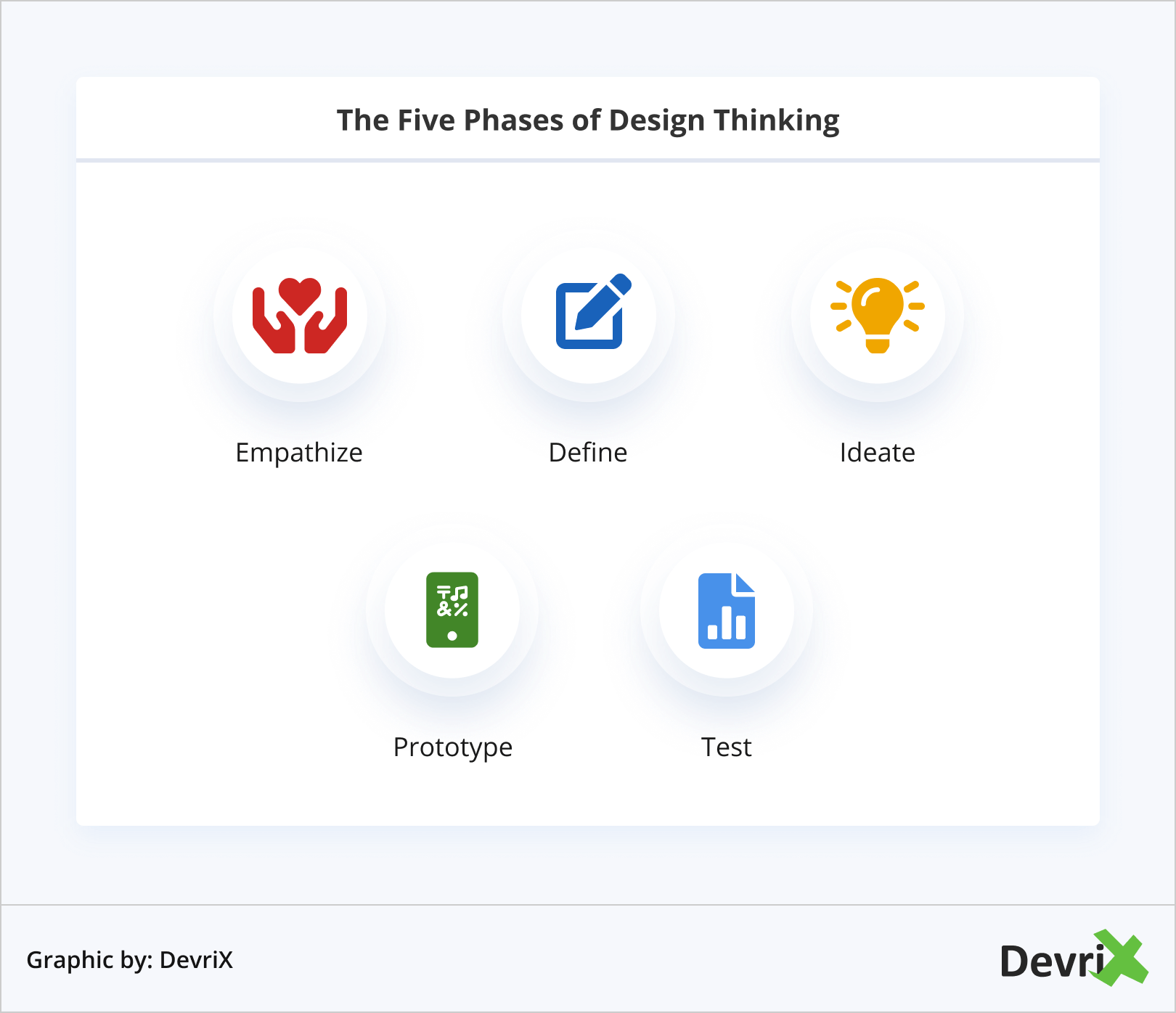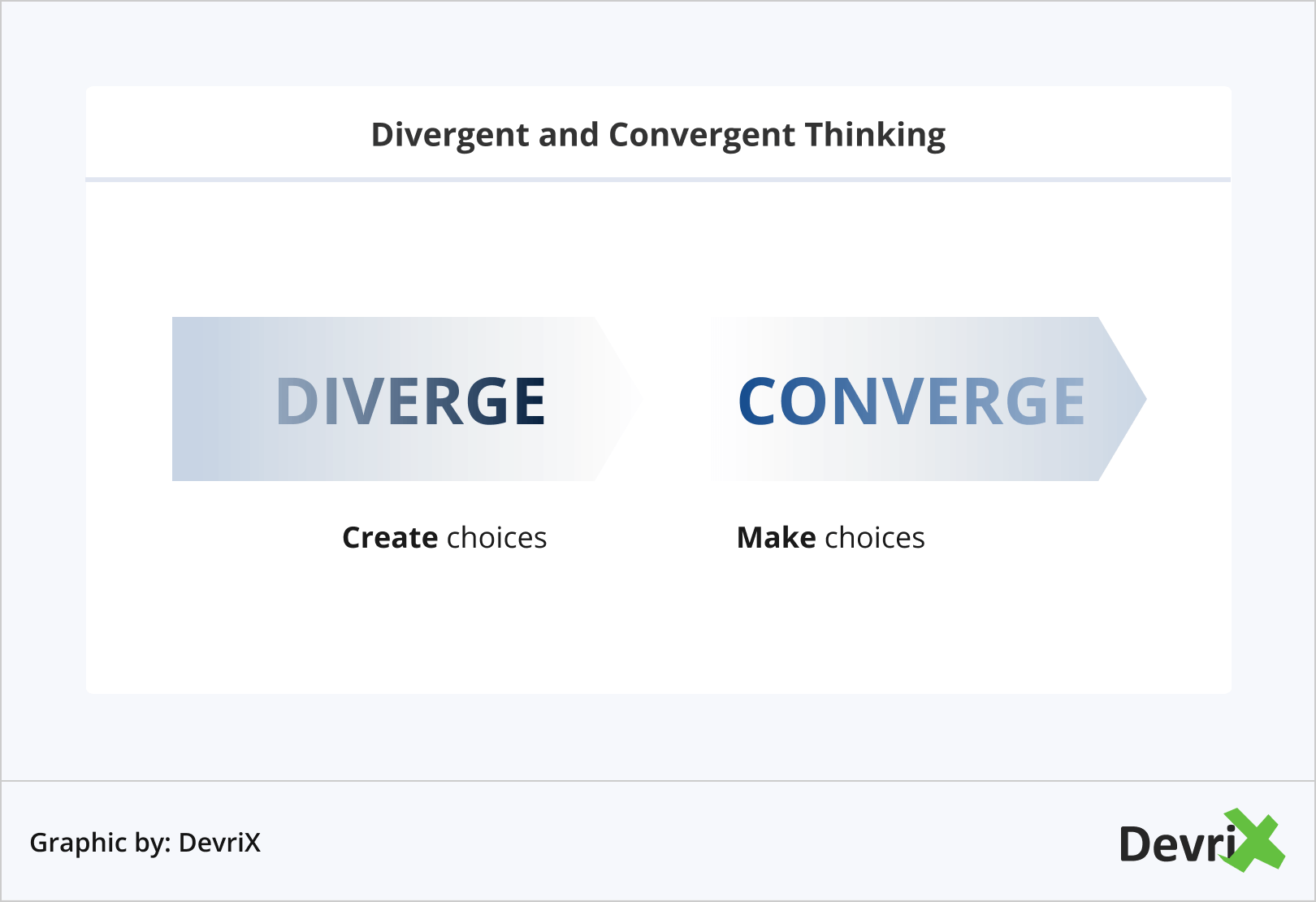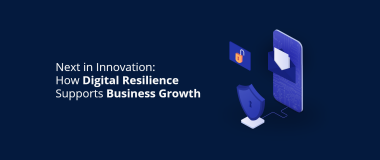Design thinking is a strategic approach to solving problems and creating world-changing innovations. It’s not just limited to designers or product/service development processes. Many great organizations like IBM, Apple, Google, and Airbnb have embraced it, thanks to which they’ve discovered better ways to narrow down their focus areas, rekindle creativity and communicate their goals with clarity.
We live in an increasingly interconnected world and many of the challenges we face are complex and dynamic, depending on many factors and involving a number of people with different opinions. Lots of businesses are asking big important questions with answers that require them to seek new points of perception. With design thinking, we can actually use our imagination to solve such problems through creativity, going beyond the confinements of any person, website, or organization.
It’s a competitive environment out there, so any business – small or large – has to be innovative to stay ahead. Innovation lies at the heart of any successful venture, holding the key to a business’s ability to come up with fresh ideas on a regular basis. It’s about putting 120% of effort into everything you do, but with an added twist so you can shape your unique identity and stand out within a cluttered market.
So, if you want to learn how to manage innovation through design thinking, you’ve come to the right place. In this article, we’ll explain what design thinking is, teach you how to think like a designer, and give you some tips on how to make it part of your business operations.
Design Thinking Is…
Every successful entrepreneur and business owner wants to challenge conventionality, and design thinking allows you to do just that. If you define problems in an obvious and conventional way, then you’ll end up with obvious and conventional solutions. To avoid that, you need to be able to ask out-of-the-box questions, learn by making and create a customer relationship based on active engagement.
So, how can we define design thinking then? Tim Brown, one of the modern pioneers of this technique, defines it as an approach to innovation that uses designer techniques and technology to solve human problems and achieve business success.
Design thinking is a human-centered approach to innovation that draws from the designer’s toolkit to integrate the needs of people, the possibilities of technology, and the requirements for business success. – Tim Brown
In his TED talk Designers – Think Big!, Tim shares that design thinking begins with integrative thinking – the ability to exploit opposing ideas and opposing constraints to create new solutions. He also suggests that when using this approach there should be a balance between three dimensions: desirability – i.e. what humans need, technical viability, and economic feasibility.

Source: Ideo
The 3 Key Basic Ideas of Design Thinking:
- A Human-Centered Design: It may integrate technology and economics, but it starts with what people need or might need, what makes their life easier and more enjoyable, what makes technology useful and usable. Hence, design is linked with understanding different cultures and contexts before we can start with concepts and ideas.
- Learning by Making: It’s about building in order to think, instead of thinking of what to build. This explains why prototypes help speed up the process of innovation. It’s only after we’ve put out our ideas into the world that we start learning what their strengths and weaknesses are, and the sooner we understand that, the quicker our ideas will evolve.
- From Consumption to Participation: Instead of solely focusing on consumption, design thinking is trying to explore the benefits of participation. This means shifting from a passive relationship between the producer and the consumer to the active engagement of everyone in experiences that are meaningful, productive, and profitable. When taken out of the hands of designers and put into the hands of everyone, design may have its greatest impact.What makes design thinking so special is that by using the work practices of designers, we can systematically extract, learn, teach and apply better techniques when it comes to solving problems in an innovative and creative way.
The 5 Phases of Design Thinking
Design thinking is a non-linear iterative process that follows five phases – Empathize, Define, Ideate, Prototype, and Test.

- Empathize: Using empathy will help you understand the problem that you wish to solve much better. Design thinking is centered on humans, so in order to solve your users’ problems, you’d have to distance yourself from your own assumptions and gather as much information about their needs as possible. This will give you meaningful insights into their true desires and focus your efforts on the issues that matter most.
- Define: After you’ve collected enough information, it’s time to analyze and synthesize your observations to identify and define the core problems. You can create personas to ensure your efforts are centered around the people you want to help.
- Ideate: Now that you have turned the information into knowledge, you can start brainstorming applicable out-of-the-box ideas. You can look for alternative viewpoints of the problem and link them to the core problems you’ve defined.
- Prototype: It’s time for experimenting. The aim of this phase is to find the best potential solution for each identified problem. A great cost-effective way to see your idea in action is to create a scaled-down, cheap version of your potential product.
- Test: It’s important to test your prototypes thoroughly, so you can redefine the solution you’ve come up with.
Since, design thinking is an iterative process, these five phases aren’t necessarily sequential. They actually don’t have to follow a specific order, so they can often occur in parallel and be repeated. Hence, it’s better to consider these phases as a guide, rather than as a strict pathway that you must follow.
How to Think Like a Designer
According to Harvard Business Review, a successful innovation process should deliver three key things: superior solutions, employee buy-in, and lower risks and costs of change.
Throughout the years, businesses have been trying to develop and implement various useful tactics for achieving such outcomes. Unfortunately, sometimes these efforts fall short. But the good news is that design thinking can help manage these tradeoffs.
There are two crucial factors for innovation: diverse perspectives and a good strategy. To innovate successfully and create an endless stream of value for your business, you need to learn how to look at problems differently and come up with solutions that others haven’t thought of before. Then, you need to have a good strategy in place – one that’s in line with your diverse perspectives and that’s oriented around your main priorities.
Out of all design processes, design thinking is definitely the best one for thinking outside the box. It presents a very useful approach to tackling today’s wicked problems. By using design thinking organizations can understand their target audience better, challenge existing approaches to problem-solving, and ultimately propose innovative solutions to current issues. It also enables teams to uncover fresh new ways of meeting users’ needs as well as doing better UX research, usability testing, and prototyping.
Now that we’ve given you an overview of what design thinking is, we’d like to give you some tips on how you can adapt it for your business.
1. Identify the Correct Problem
Design thinking gives us a new way of approaching problems. It concentrates on asking the right questions to identify a core issue that is important to the consumers. Hence, design thinking is not about building products and services, but rather about identifying the real issues and solving them with the right solutions.
An essential aspect of design thinking is gaining a deep understanding of the user environment through interacting with them. But, instead of defaulting to a normal convergent approach where we make the best choice out of potential alternatives, it encourages us to take a divergent approach to explore alternatives, solutions, and ideas that haven’t existed before.

Source: Ideo
The first step on the road to divergence is to formulate the question we’re trying to answer. To do that, it’s important to foster a mindset for innovation within your teams – one that combines creative and analytical thinking.
Contrataty to the popular belief that creativity is something people are born with, with the implementation of the appropriate mindset, steps, and processes, creative thinking can be learned.
2. Create Innovative Cross-disciplinary Teams
In order to comprehend and solve new kinds of multidimensional problems, it’s crucial to foster a healthy collaboration between logical and creative ways of thinking. Design thinking is a human-centered discipline that strongly encourages multidisciplinary teams, to come together and create revolutionary ideas.
To facilitate innovation through design thinking within your organization, it’s necessary to start thinking about creating an effective cross-disciplinary and cross-departmental collaboration. An innovation process will be successful only when all team members are onboard for it and involved in all activities. This will foster effective cross-team collaboration, better organization of responsibilities, and thus make the overall work easier and more coherent.
3. Build an Innovation-encouraging Environment
If you want to create a team of great design thinkers, you need to concentrate on developing a collaborative, open, and explorative work culture. This way you can successfully combine logic and imagination so you can ask the right questions and design innovative solutions.
People’s thinking patterns, understanding of things, and ability to innovate are greatly influenced by their environments and the activities they engage in the most. This is why many innovative companies spare resources for creating workspaces filled with all sorts of conventional and unconventional equipment as well as areas for and activities that support creative thinking.
Since design thinking focuses on brainstorming, interactivity, and collective contribution, it’s important that businesses create an environment that enables individuals to collectively come up with innovative suggestions and design better products/services. This means establishing dynamic spaces where people can embrace change, experiment with new concepts, explore the unknown, and work together to test radically new ways of thinking.
4. Center Your Solutions Around Humans
Design thinking has people at the center of every process. When you think like a designer you can come up with wild ideas. So, it’s important that you take your time to test everything and that you’re willing to face a few roadblocks every now and then.
Adopting a designer’s mindset means embracing empathy, ambiguity, optimism, creativity, and iteration. You also have to remember that as long as you’re focused on the people and listening to them, you will be able to arrive at innovative solutions that can meet their needs best.
Additionally, you should learn how to be confident creatively. Everyone can be a creative thinker, so long as they use their imagination to look at the world differently and understand it in their own unique way. Once you learn how to be a dynamic problem solver, you can unlock a great potential to innovate, design, and strategize.
Conclusion
Managing innovation through design thinking means balancing human needs, with technical capabilities and economic feasibility. It’s a process of exploring opposing ideas and constraints, for the sake of finding the right questions to ask and discovering innovative solutions to test.
Design thinking encourages learning by making and collaboration between all stakeholders. If you wish to solve uncommon problems and find uncommon solutions you need to be able to empathize, define, ideate, prototype, and test, and involve everyone that can assist with and benefit from the process.



![Influencer Marketing Statistics Every Business Should Know [Infographic]](https://devrix.com/wp-content/uploads/2019/10/Influencer-Marketing-Statistics-Every-Business-Should-Know-Infographic@2x-380x160.png)
